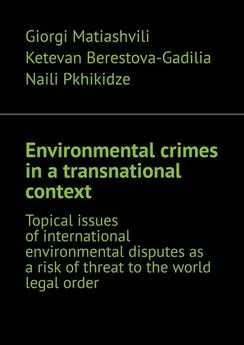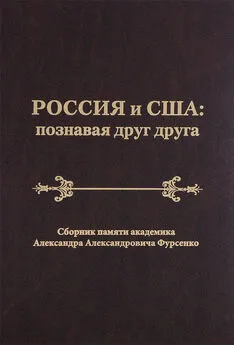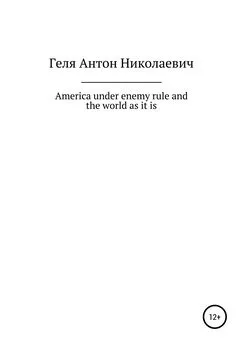Giorgi Matiashvili - Environmental crimes in a transnational context. Topical issues of international environmental disputes as a risk of threat to the world legal order
- Название:Environmental crimes in a transnational context. Topical issues of international environmental disputes as a risk of threat to the world legal order
- Автор:
- Жанр:
- Издательство:неизвестно
- Год:неизвестен
- ISBN:9785005620408
- Рейтинг:
- Избранное:Добавить в избранное
-
Отзывы:
-
Ваша оценка:
Giorgi Matiashvili - Environmental crimes in a transnational context. Topical issues of international environmental disputes as a risk of threat to the world legal order краткое содержание
Environmental crimes in a transnational context. Topical issues of international environmental disputes as a risk of threat to the world legal order - читать онлайн бесплатно ознакомительный отрывок
Интервал:
Закладка:
6. The principle of environmental impact assessment. In recent years, the number of universally recognized principles of international environmental law of a preventive nature has increased, i.e. not related to compensation for harm already inflicted, but aimed at some kind of preventive measures. This principle was laid down in the Convention on Environmental Impact Assessment in a Transboundary Context of 1991, the United Nations Convention on the Law of the Sea of 10 December 1982 (Article 206), as well as in numerous regional treaties – the Regional Convention for the Conservation of the Red Sea Region and the Gulf of Aden Environment of 1982, Convention for the Protection and Development of the Marine Environment of the Wider Caribbean Region of 1983 and so on.
7. The principle of liability for damage to environmental systems of other states or international spaces.
The subject of international environmental law.
The formation of the branch of international law – the international environmental law was generated on the basis of the principle “Use your own so as not to harm another”. Issues of protection and use of the ambient environment are regulated by national legislation as long as they do not go beyond the territorial boundaries of the state. International environmental law has an independent subject of legal regulation – international environmental relations, which can be divided into three groups:
– Relationships to prevent and limit harmful effects on the state of the ambient environment, which can only be resolved by the efforts of the entire international community (pollution of the World Ocean, air basin, environmental pollution during military conflicts and so on).
– Ensuring the rational use of international natural resources.
– Protection of unique natural objects by their conservation from human economic impact (environmental immunities).
Subjects of international environmental law.
The subjects of international environmental law include: states, international organizations, international non-governmental organizations.
States are the main subject of law. Several classifications of states-subjects of international environmental law have been specified in the scientific literature:
1) States, that are the most environmentally vulnerable and states, that are most environmentally friendly;
2) Developed and developing states, which are characterized not only by a different degree of independence in solving environmental problems, but also by different substantive interests in this area;
3) States, that are affected by the same natural factors due to their geographical location and states that, due to their geographical location, are affected by various natural factors, which influences on the content of the adopted international legal documents.
Despite the difference in the status of states, the implementation of specific legal and regulatory regulation is based on common principles. One of the trends in international environmental law has been the growing importance of international and international non-governmental organizations as subjects of international environmental law.
International environmental law is a relatively young branch of international law, that has emerged from such branches of international law as international maritime, air, space law.
However, these branches regulate relations regarding the exploitation of the elements of nature and are based on other priorities – ensuring the implementation of the rights of sovereign states to use natural resources. The international environmental law is based on the use of natural resources subject to restrictions imposed in the interests of international environmental protection.
Objects of international legal protection of the ambient environment
Objects of international legal protection of the ambient environment are natural objects, about which the subjects of international law have environmental relations. There are two categories of such objects: international legal objects, the impact on which occurs from the territories of individual states, and objects, the impact on which occurs from the international territory or from the territory with a mixed regime. Some objects may belong to both the first and second groups.
The international legal objects, the impact on which occurs from the territories of individual states, include: the atmospheric environment, inland waters, flora and fauna.
The atmospheric environment is the common property of humankind. The main harmful impact on the atmosphere occurs from the territories of individual states by such types of their activities as:
Sulfur emission into the atmosphere, generating acid rains.
Emissions of carbon dioxide facilitating to the growth of the greenhouse effect.
The use and leakage of chemicals that destroy the ozone layer of the Earth.
The leakage of radioactive substances into the atmosphere.
Inland waters are the waters of rivers and lakes, which are located on the territory of individual states, but are objects of international environmental law. Rivers, or rather water streams, which are understood as a system of surface and ground waters forming a single channel, have attracted the attention of the international community for two reasons. First, some rivers flow through the territory of two or more states (international rivers). Secondly, the waters of the rivers somehow end up in international waters. Some lakes are subject to international legal protection in connection with their classification as a world natural heritage (for example, Lake Baikal, Lake Loman). The international community is trying to protect fresh water system of international importance from the following types of pollution:
1. Detergents used in washing and cleaning agents,
2. Contamination with chlorides used in water disinfection,
3. Dumping of oil and oil products.
As an example of the international protection of this object, we can cite the environmental disaster in Romania on January 31, 2000, when, as a result of an accident at the “АУРУЛ” gold mining enterprise in the Carpathians, almost 100,000 cubic meters of water with a high cyanide content fell into the Tisza River, and from it to the Danube. Only in the first two days after the accident in river Tisza, 80% of fish stocks died.
According to experts, it will take at least 10 years to restore the ecological balance of the river Tisza. Hungary has filed a claim in international courts for damages to the environment and public health. Fauna and flora are classified as a mixed object of legal regulation, since they are affected both from the territory of individual states and beyond. International protection concerns: endangering and rare species of flora and fauna, emigratory species of animals, nature in certain regions. There are a number of specific areas of cooperation between states in this field:
1. Protection of plant kingdom: protection of plants, quarantine of plants and their protection from pests and diseases, protection of tropical tissue;
2. Protection of specific animal species: Atlantic seals, Atlantic tunas, polar bears, listed in the Red List of Threatened and rare species of animals;
3. Protection of habitats: wetlands, habitats of migrant birds.
International legal objects, the impact on which occurs from an international territory or from a territory with a mixed regime.
These are space and the World Ocean, which are objects of the common heritage of humankind, the use of nature for military purposes.
The World Ocean – is an ecosystem capable of processing a huge amount of organic substances (in the concept of the “World Ocean”, we mean both the waters of the oceans themselves and the waters of the seas). A sharp increase in the number of discharges of waste products of humankind, their chemical composition, placed in jeopardy the mechanism of self-purification of the World Ocean that had been formed for thousands of years. Environmental law prohibits or restricts releasing into the World Ocean of the following substances:
1) Oil and oil products.
Their long decay period and spread over large surfaces represents particular danger. So, in November 2002, the tanker “Prestige” sank in the coasts of Spain, and more than 500 kilometers of the coast were poisoned with oil. The Prime Minister of Spain stated, that the country faces the largest ecological disaster in its history. The generated oil patches were not liquidated for a long time, causing significant damage to the aquatic biological resources of the Atlantic.
2) Synthetic products
This includes all types of plastic materials, including synthetic ropes, fishing nets, and plastic bags for trash. Their danger is in their exceptional floatability.
3) Poisonous substances
Substances containing organochlorine compounds, quicksilver, cadmium and materials for biological and chemical warfare.
4) Radioactive materials
International environmental law restricts dumping and disposal of radioactive waste material.
Outer space
Outer Space – means the space, located outside the earth atmosphere. The economic use of outer space is still limited by the technical capabilities of humankind. Though, the international community has already faced the problem of protecting the above-mentioned object from the so-called “space rubbish”. Its accumulation in near-Earth orbits (adjacent space) can make it impossible for mankind to go further into outer space. Although, it is impossible to do without the use of nuclear energy in space exploration, international environmental law limits the testing of nuclear weapons in outer space. In this regard, the ecological immunity of some outer space objects has been established.
The ecological immunity of some objects of outer space is withdrawal from economic activity of objects that are the common property of mankind. In relation to space, environmental immunity extends to such a celestial body as the Moon.
Objects of the common heritage of humankind
Objects of the common heritage of humankind are territories that are not under the sovereignty of any state and having environmental immunity. These include: Antarctic and the Moon.
&5 Hostile use of means of environmental impact and intentional environmental pollution
The public danger of ecological crimes lies in the fact that it encroaches on a person through nature, through the destruction or qualitative deterioration of the biological basis of his/her existence. Some European countries have joined to the Convention “On the Protection of the Environment” through the criminal legislation that they have developed in their country.
Ecological crimes are criminal infringements on environmental safety, that is, the safety of the surrounding natural environment as a condition and means of human habitation and living organisms, and, in principle, their survival.
That is, ecological crimes violate the human right to a healthy ambient environment.
The specific object of this group of crimes is public relations for the rational use of natural resources, the preservation of a natural environment favorable for human-beings and other living beings and the provision of environmental law and order and the safety of the population.
The direct objects of the ecological crimes are public relations for the protection and rational use of certain types of natural resources and ensuring the environmental safety of the population.
Based on the direct object, ecological crimes are divided into two types.
1) Ecological crimes are of a general nature. They encroach on nature as a whole. These include:
Читать дальшеИнтервал:
Закладка:










